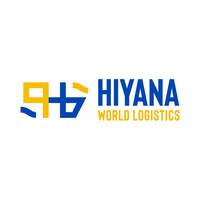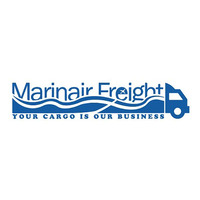How shippers should manage their bids

Transportation bids, which are sometimes called requests for proposal/pricing (RFP) or requests for quotation (RFQ), are requests from shippers to transportation service providers such as carriers or third-party logistics companies (3PL/brokers) to provide prices and service standards for transporting goods. This process can be extremely time-consuming and difficult to manage – especially since transportation management is not the main focus of the requesting company’s business. Here are a few tips to help make this process as smooth as possible.
Target your providers carefully
This should go without saying, but many companies simply spam a number of carriers and 3PLs with potential bids without doing much research on the companies and what they do. Many carriers have specialties, meaning they focus on transporting a specific type of good or delivering to certain customer types. For example, a shipper that ships perishable goods should not request a proposal – or hire – a carrier that transports mostly hazardous materials. Avoid sending bids out to too many providers; this makes the process cumbersome and some will not put as much effort into the bid knowing they have little chance of winning. Selecting a choice few at the beginning of the process should provide the right level of competition while keeping the process manageable.
Size matters
Shippers should also check the size of the companies with whom they decide to partner. Carriers with only a few trucks will not be able to handle large volumes. Figuring out how much capacity you need at your busiest time of year will allow you to target the right size carrier(s) to handle your demand, understanding they will have other customers as well.
Financial strength
Financial health matters. The cheapest carrier is not always the best option. A carrier may give you the cheapest rates because it is struggling financially, and in a few months you will have to find another provider if it goes out of business. A carrier that is struggling financially could have a struggling operation, which leads to inconsistent service and other relational issues. Ask for basic numbers like operating and debt to asset ratios. A carrier does not have to provide these figures, but the healthy entities will be more willing.
3PL or direct-to-carrier
The first question you need to ask yourself when considering a logistics provider that owns no trucks or assets compared to going directly to a carrier is how comfortable are you making all of the above evaluations in terms of size, financial health and understanding your specific needs. If your company does not have a transportation manager position, that is probably your first sign you need to consider a 3PL to take on the responsibility of managing your transportation. You will pay more for this service, but it may be worth it to save overhead costs and the problems that can come with choosing the wrong carrier. On the other hand, partnering with a carrier and developing a strong relationship will provide the most control and lowest cost over time if managed correctly.
Timing
Pick the right time if you can help it. For most years this means having carriers bid during their least busy time. Pricing departments get overwhelmed with bids in the fall, but capacity tends to be tightest in the spring. January is traditionally the slowest month for freight and subsequently the loosest in terms of capacity. If your bid process is longer, send it out in December with a deadline in January. The back office is less stressed and general market demand is soft, making this the ideal time for evaluation for a carrier or 3PL. Budgets may not allow for this, however, so knowing general freight market conditions can help you time your bids for optimal prices.
Provide clean and accurate information
Once you have decided on which companies you are targeting, you will need to provide the candidates with the pertinent information and right level of detail. Put all your information in a clean and legible format, which will generate the fewest questions from the providers. The main questions you should answer are:
- How much are you shipping? (i.e. how many truckloads per week/for less-than-truckload, provide size/pieces and weight)
- When/how often are you shipping? (annual volumes by week or month)
- Where is it shipping from and where is it going? (origin and destination 5-digit zip codes are preferable to avoid any potential issues)
- What are you shipping? (i.e. does the freight need any special handling or consideration?)
The more accurate and detailed you are with this information, the more accurate the bid will be. Once chosen, the better your relationship will be with your provider, which will lower problems throughout the year. Carriers and 3PLs alike take management difficulty into consideration each year when bids typically renew. This will keep costs lower and help you avoid any potential mid-cycle problems.
Additional services
Make sure you communicate any additional services in your bid package. Some examples are:
- Temperature control
- Liftgate
- Lumper/driver assist unload
- Expedited delivery
Even if there are minimal amounts of any special services, knowing there is the potential for them will help your provider be upfront on what it can provide (because it may not offer some or all of those services).
Selecting your provider
If you choose to use a 3PL, you do not have to make this decision, because it will take all of your information and manage the process at this point. If you choose to deal directly with a carrier, you now need to begin the selection process. Many shippers have multi-stage bids during which carriers submit rates and service standards. This can drag the process out longer, but can put downward pressure on rates in each subsequent stage. Lower volume shippers should keep things as simple as possible because this potentially damages the relationship with the carrier (by making the process longer and forcing the carrier to push rates even lower than it wants).
Most of the selection should have already been made in the screening process outlined above. At this point, it is about deciding how many carriers you need and which one(s) you think will provide the best service at a desired rate. Any carrier can put price and service on paper in January, but leave you wanting in June. Pick a provider that you think has a strong understanding of your needs and general market conditions. If a carrier is offering you 20% lower rates in a time when the market is booming, take that as a red flag.
Due diligence on the front-end and solid communication will make this process smoother and more fruitful.
Good luck and happy bidding.
Source: freightwaves.com












































.jpeg)